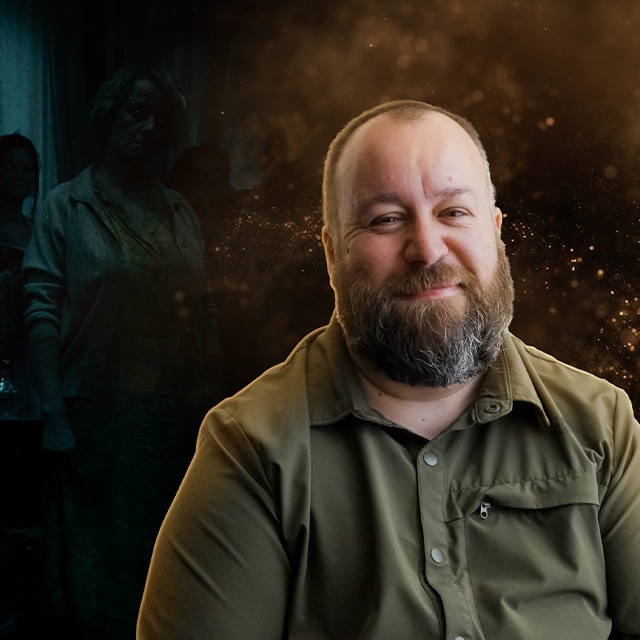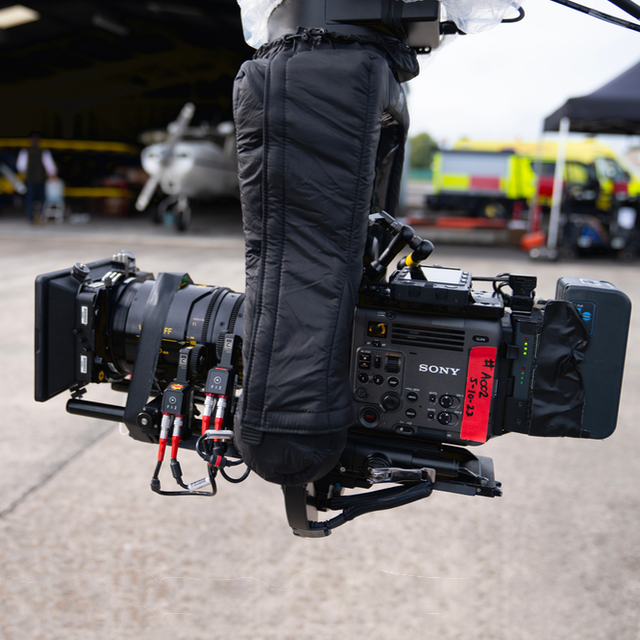Scene Deconstruction with Kate Reid, BSC
Deconstructing key scenes from HBO’s The Baby.
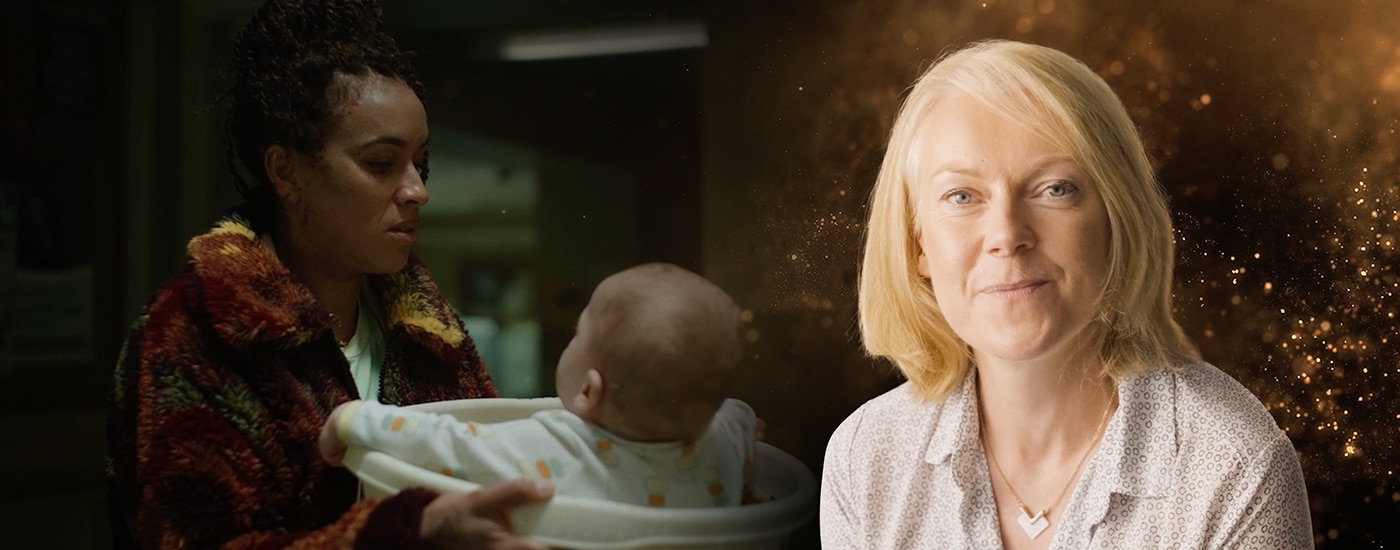
Introduction
Kate Reid, BSC is a rising star of British cinematography who has worked on such high-profile productions as Game of Thrones, Steven Knight’s Great Expectations and HBO’s The Nevers, where she was nominated for an outstanding achievement in cinematography ASC award.
In this deconstruction, Kate takes us through how she shot key scenes in the 8-episode HBO series The Baby. Shot on Sony VENICE in 6K with an aspect ratio of 2:1 and Canon K35 lenses, The Baby tells the dark but humorous story of a woman (Natasha) in her late 30s that is questioning some of the choices she’s made in her life and where her life is going because many of her friends have started to drift away as they start families. Suddenly, out of nowhere, a baby quite literally falls into her arms. From that point on, her life starts to fall apart as she tries to figure out how to be a mother to the child she wasn’t expecting.
Please note that in this video the Sony CBK-3610XS VENICE Extension System is referred to by the unofficial nickname “Rialto.” Apologies for any confusion.
Scene Deconstruction: Key Insights
- When working with babies or children, the amount of time they can spend on set may be extremely limited. Good planning and time-saving features, such as VENICE’s built-in ND filters or easy-to-adjust lights, can make the difference between getting the shot or not.
- When blending location shots and studio shots for the same scene, similar lighting and matching color temperatures help make the scene seamless.
- Convincing looking nighttime driving scenes can be shot with a simple studio setup using chased lights to simulate passing streetlights.
Cliff Edge Scene
In this scene, we see a woman carrying a baby while being chased through a forest. The scene was shot on location over two nights with some blue screen work – both on location as well as additional blue screen work in a studio. The chase through the woods was filmed using a combination of handheld shots and a camera mounted to an electric bike that could track Natasha as she runs through the trees.

Once out of the trees, Kate swapped the VENICE camera for a Libra crane, which was then able to track above Natasha as she stops at a cliff edge, giving an unnerving view down the precipice. There are additional close-up shots of the baby crawling towards the cliff edge and these were shot in a studio using a blue screen. A blue screen was used rather than the more traditional green screen to provide good color separation from the green grass foreground. In post-production, cutting between the different shooting styles, the shakey handheld shoots and the smoother electric bike tracking shots delivers a frantic high-energy feel that accentuates the action.

The location was divided into sections. Kate used 18K lights on tall cranes to provide a moonlight effect. On one of the cranes and also on a Bronto aerial platform – a type of tall crane with an extending jib section at the top – she mounted both 18K hard lights and s360 light panels so that she could quickly switch between a hard light and a slightly softer light. In the woods, she hid Astera tubes among the trees for small amounts of additional fill, and a balloon light was also used. All of the location lights were set to the same color balance and then, for the studio shots of the baby, the same color balance was used.
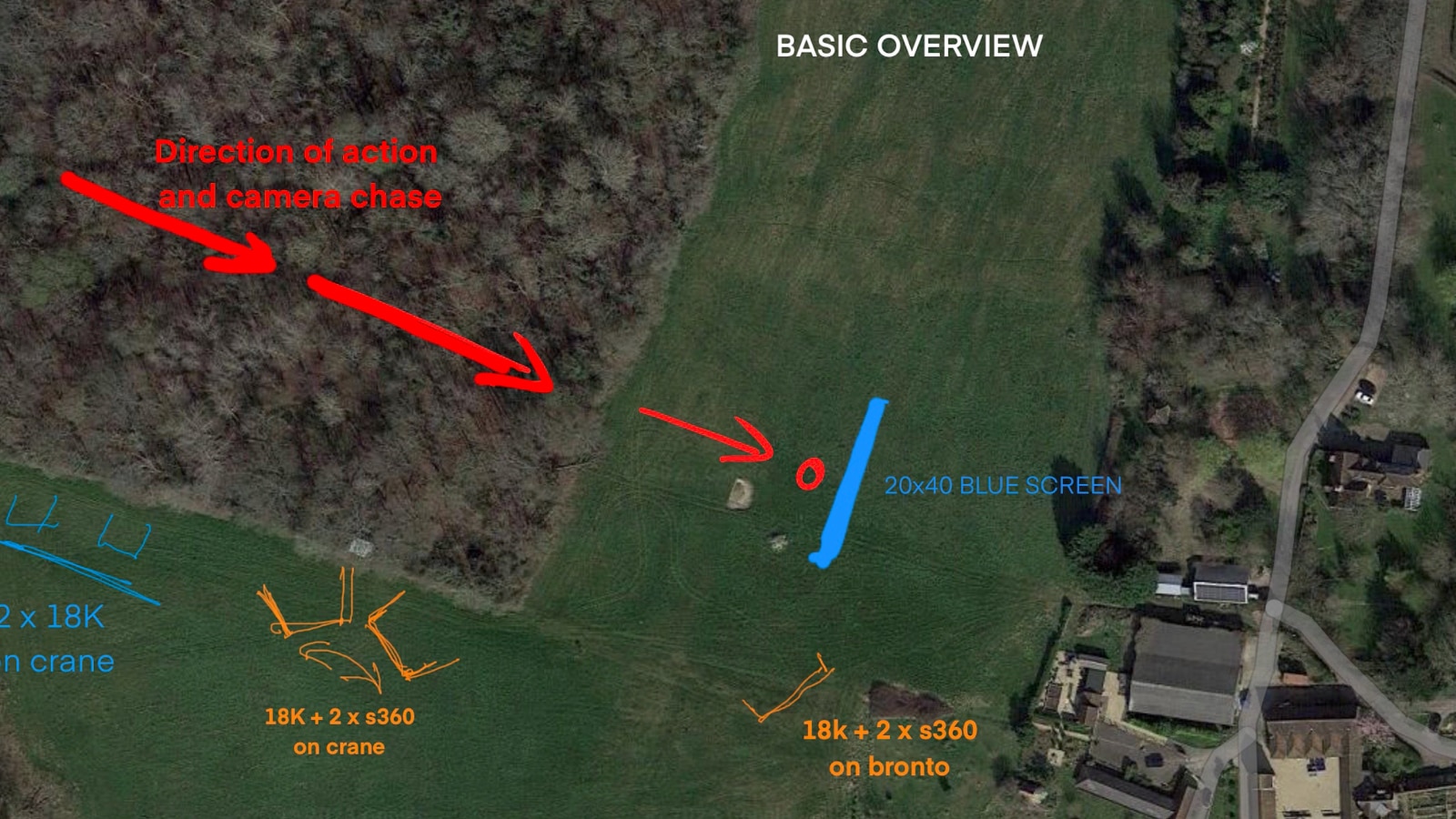
Production plan diagram showing the route of the chase and placement of the lighting rigs and blue screen.
In the studio, a 20ft (6.5m) x 20ft (6.5m) raised platform covered in grass was used with a blue screen behind it. The raised platform allowed Kate to use a track and dolly on the studio floor to track with the baby, giving a ground-level point of view. For the close-up shots, small fill lights were used to provide a little more detail on the actors’ faces. By carefully replicating the location lighting and using exactly the same color temperature as the location shoot, once the VFX department replaced the studio blue screen with the scene’s background plates, the studio shots cut in seamlessly with the location shots.

Kate also took advantage of the VENICE Extension System, where the camera’s sensor block can be separated from the main body of the camera. For the running shots, this meant that the camera body could be worn on a backpack with only the camera head and lens in the camera operator’s hands; this allowed the camera operator to run more freely.
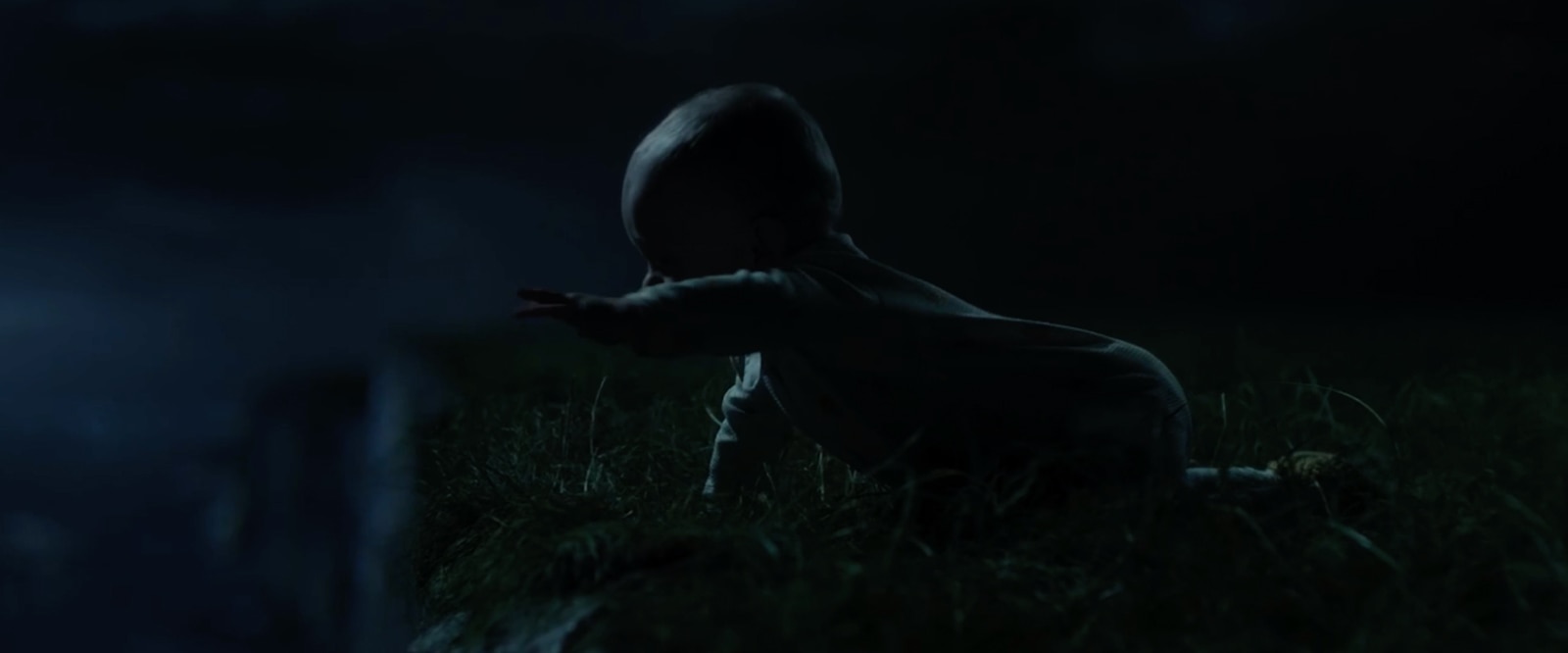
It’s really satisfying when you’re shooting across a number of locations where some of it is studio work, some in camera and some VFX and then, when you watch the final sequence, it’s really satisfying to see it all come together and it feels like a seamless sequence.
The Car Scene
This is a nighttime driving scene. The car interiors were shot in a studio. Kate used rows of Astera tubes that could be chased so that the light would sweep along the car to simulate passing streetlights. To simulate car headlights shining into the car and light the actor’s face, she placed a bright light, controlled by a dimmer, on a dolly. The light could then be faded up and the dolly pushed in towards the car to add a very convincing sweep of light.
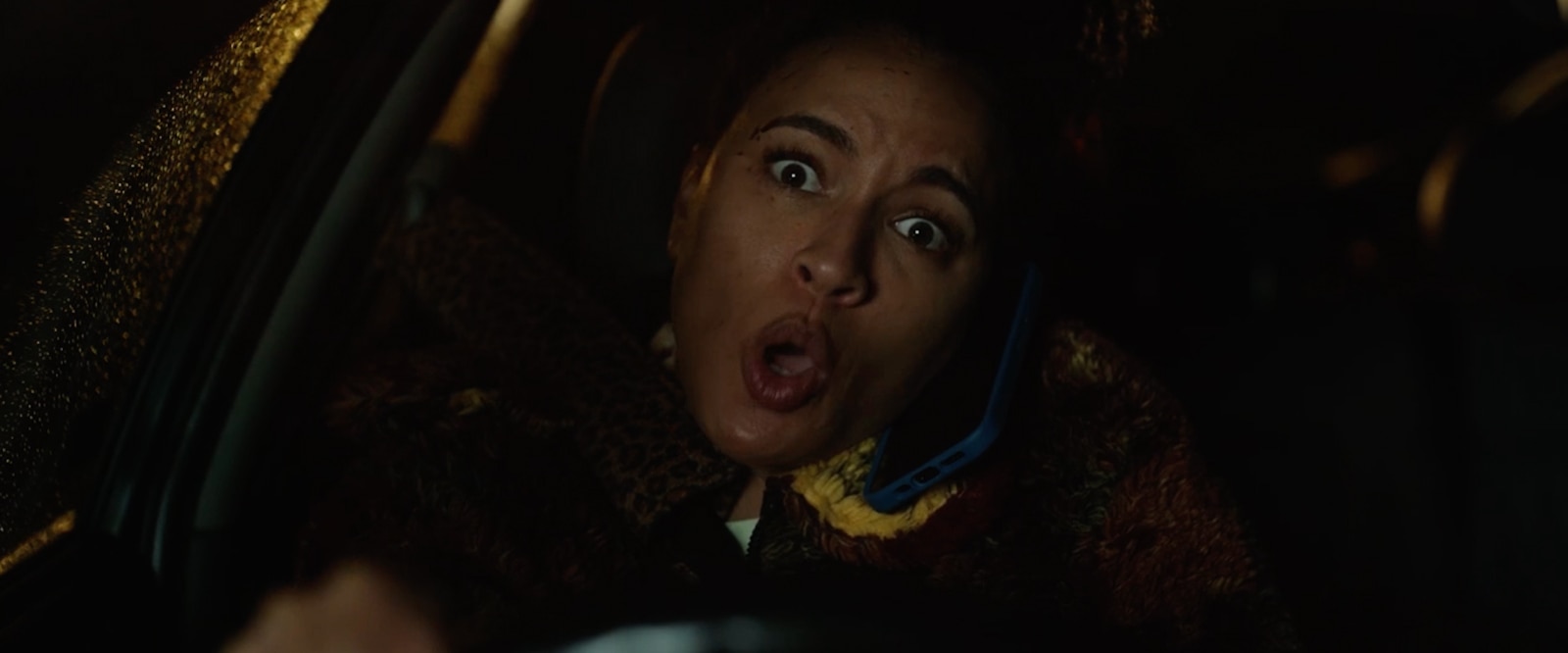
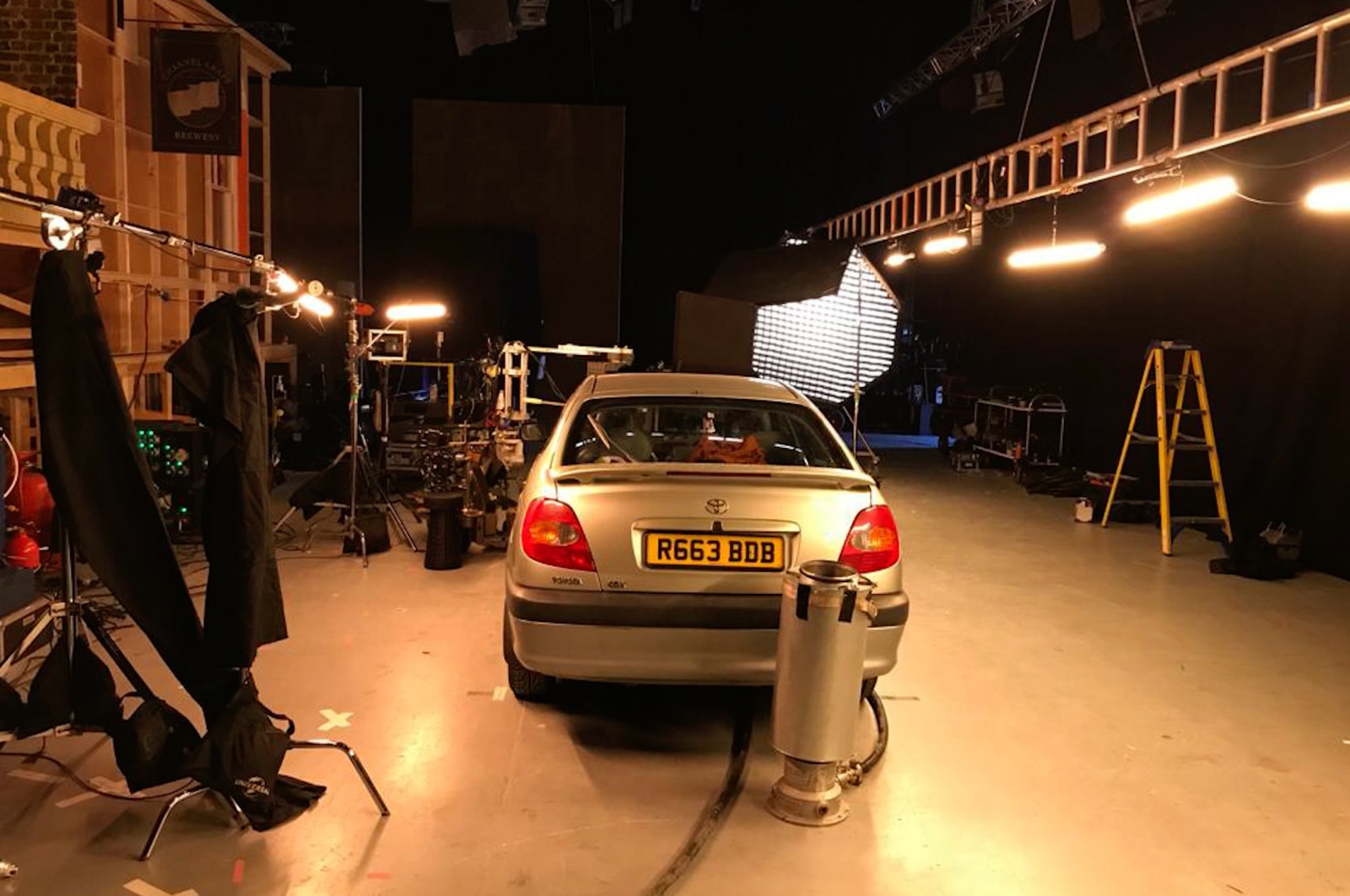
For many of the shots, a prosthetic baby, carefully modelled on the film’s real baby, was used as a stand-in.
“We got so lucky,” Kate says. “We did the [car] interior work first in the studio and I wanted to use rain on the windows to add to that aspect of feeling like the car was moving through the motion of the rain and then, when we came to shoot on location, it was pouring down.”
For this scene in particular, Kate found the high sensitivity of VENICE 2 to be particularly useful, allowing the scene to remain very low key.

The Apartment Scene
Kate wanted to make the apartment spaces feel very real. So, wherever possible, she tried to light the rooms from the outside without adding extra lights into the ceilings. The lighting was always motivated from a naturalistic point of view, but some scenes needed to convey a lot of tension, even a slight horror feel. To help drive this tension, Kate made use of off angle or uncomfortable framing as well as large areas of negative space (parts of the frame where there is very little detail or texture).
The apartment set was built on a sound stage. Translites – large realistic background images – were placed outside the set to cover two sides of the exterior and then a large daylight balanced softlight was used to light both the Translites and to provide ambient light for the set. In addition, a number of SkyPanels were used to provide additional exterior daylight as needed. When a more directional light was needed, Kate used 10Ks with diffusion frames.


Kate chose a large-format camera because she wanted to use wider lenses and, at the same time, have a shallow depth of field. A key benefit of the Sony VENICE camera is its built-in ND filter system, where the ND filtration increases in 1-stop steps. This allowed her to pick the shooting stop for the scene and then use the built-in ND filters to stay at that stop even if the light levels changed. This is much faster than swapping between different external filters and speed was essential: whenever the baby was on set, they only had a few minutes to shoot before the baby rested again.
For Kate, anything that could be quickly adjusted just by the touch of a button, such as the amount of ND, was really important as it could be the difference between getting an extra take or not.


